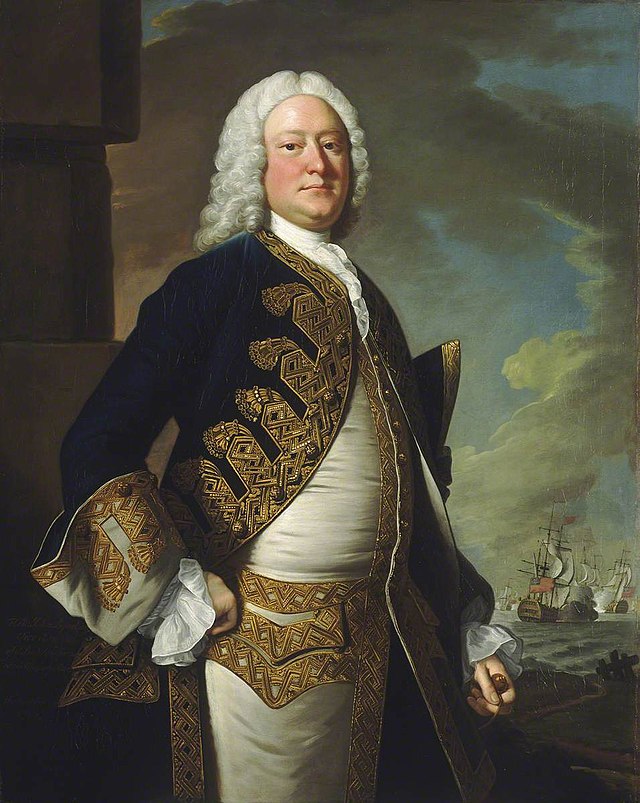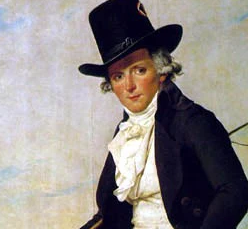Shoes Make the Man: Regency Footwear
Perhaps no image so thoroughly denotes the Regency Hero as that of a Gentleman elegantly, yet casually dressed in dark coat, buff trousers and tall boots. Who could resist a Mr. Darcy or Knightley presented in such a favorable light? And yet-- those boots that so epitomize the time were still a new fashion only just becoming popular during Jane Austen's day.

Jessamyn Reeves Brown is an historian of Regency Fashion. Her research into Regency footwear shows that 'prior to the Regency, both women and men wore what we now call "court shoes": high-throated pumps with curved heels and side pieces that tied or buckled elaborately at the throat. As dresses became less structured and suits less elaborate, shoes did too. Heels dropped rapidly through the 1790s and by 1800 were very small indeed, while material was pared away to a minimum from the uppers. Men's dress shoes lost their heels even before women's did, but some retained the fine buckles of the 18th century for the most formal of occasions. Men's shoes also became basic black quite early in the century - almost no other color is seen after 1800. Both men's and women's shoes of the 18th century had flaps attached at the instep and outstep that came up over the throat and were held in place with a buckle (most commonly) or were tied in place with bows. These flaps were called latchets, and they did not entirely disappear in the Regency.' Discover more fascinating details of men's footwear on her Regency Companion Page.
“Polished” Hessians
 Hessian (from Hesse in Germany) refers to a style of boot that became popular in the 18th century. Initially used as standard issue footwear for the military, especially officers, it would become widely worn by civilians as well. The boots had a low heel, and a semi-pointed toe that made them practical for mounted troops as they allowed easy use of stirrups. They would reach to the knee and had a decorative tassel at the top of each shaft. The Hessian boot would evolve into the rubber work boots known as "wellies" and the cowboy boot. When describing the appearance of Marley's Ghost in A Christmas Carol, Charles Dickens mentions the tassels on his boots, indicating that they were Hessian style.
Hessian (from Hesse in Germany) refers to a style of boot that became popular in the 18th century. Initially used as standard issue footwear for the military, especially officers, it would become widely worn by civilians as well. The boots had a low heel, and a semi-pointed toe that made them practical for mounted troops as they allowed easy use of stirrups. They would reach to the knee and had a decorative tassel at the top of each shaft. The Hessian boot would evolve into the rubber work boots known as "wellies" and the cowboy boot. When describing the appearance of Marley's Ghost in A Christmas Carol, Charles Dickens mentions the tassels on his boots, indicating that they were Hessian style.
The Wellington Boot
 The Wellington boot, also known as a willy, a wellie, a topboot, a gumboot or a rubber boot, is a type of boot based upon Hessian boots. It was worn and popularised by Arthur Wellesley, 1st Duke of Wellington and fashionable among the British aristocracy in the early 19th century. The first Duke of Wellington instructed his shoemaker, Hoby of St. James' Street, London, to modify the 18th century Hessian boot. The resulting new boot designed in soft calfskin leather had the trim removed and was cut closer around the leg. The heels were low cut, stacked around an inch, and stopped at mid-calf. It was hard wearing for battle yet comfortable for the evening.
The Wellington boot, also known as a willy, a wellie, a topboot, a gumboot or a rubber boot, is a type of boot based upon Hessian boots. It was worn and popularised by Arthur Wellesley, 1st Duke of Wellington and fashionable among the British aristocracy in the early 19th century. The first Duke of Wellington instructed his shoemaker, Hoby of St. James' Street, London, to modify the 18th century Hessian boot. The resulting new boot designed in soft calfskin leather had the trim removed and was cut closer around the leg. The heels were low cut, stacked around an inch, and stopped at mid-calf. It was hard wearing for battle yet comfortable for the evening.
The Iron Duke didn't know what he'd started—the boot was dubbed the Wellington and the name has stuck ever since. (The Duke can be seen wearing the boots, which are tasseled, in this 1815 portrait by James Lonsdale.) These boots quickly caught on with patriotic British gentlemen eager to emulate their war hero. Considered fashionable and foppish in the best circles, and worn by dandies, such as Beau Brummell, they remained the main fashion for men through the 1840s. In the 1850s they were more commonly made in the calf high version and in the 1860s they were both superseded by the ankle boot, except for riding.



1 comment
A very informative article. I shall now know quite well what to wear to the next assembly.
Anonymous
Leave a comment
This site is protected by hCaptcha and the hCaptcha Privacy Policy and Terms of Service apply.